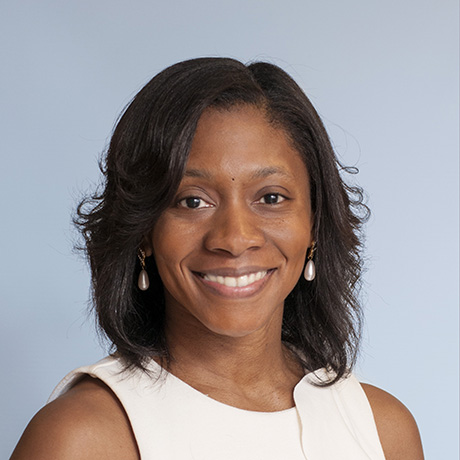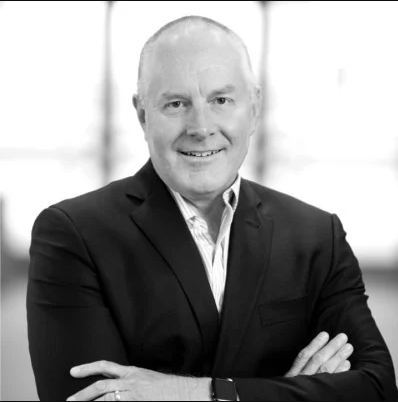
inDEPTH examines topics with perspectives from your colleagues through multiple lenses to illustrate the impact on their practice.
Learn more & submit your own perspective!
Recently, we’ve covered numerous angles on the pros and cons of telehealth, from exercise delivered via telehealth deemed to be effective for chronic disease and the validation of home visual acuity tests for telehealth in the COVID-19 era to disparities seen in telehealth use for cancer care during the pandemic and reasons why the Telehealth Extension and Evaluation Act isn’t enough. We’ve covered how telehealth care cuts COPD assessment scores in half, the use of telehealth for managing heart failure, how telehealth may increase access to substance use treatment during COVID-19, how telehealth prevented pandemic-related care disruptions for patients with MS, and on, and on, and on. But what are you and your colleagues experiencing in day-to-day practice in the real world? We spoke with two physicians to get their perspectives— click above to submit your own!
Cerebrovascular neurosurgeon Dr. Peter Rasmussen, from the Cleveland Clinic in Ohio, is committed to digital health solutions, and as such, is the Chief Clinical Officer of The Clinic, the only digital health company that combines world-renowned clinical expertise of the Cleveland Clinic with innovative connectivity technologies. During a Physician’s Weekly Podcast episode (listen below), he spoke with us about the role of virtual second opinions and the cost savings associated with them. Unnecessary testing and procedures are expensive. And one study found that more than 622,000 patients in the state of Washington alone underwent an unnecessary test or procedure in a 1-year period, and that ended up costing approximately $282 million.
During the same episode (listen below), with spoke with Professor Fatima Cody Stanford, who is an obesity medicine physician scientist at Massachusetts General Hospital and Harvard Medical School. She co-authored papers in both Nature Medicine and Lancet Digital Health on how telehealth can both support and exacerbate health disparities.
inDEPTH Perspectives from Our Contributors
Patient Demographics: Patients With Obesity- Fatima Cody Stanford, MD, MPH, MA

Fatima Cody Stanford, MD, MPH, MPA, Associate Professor of Medicine and Pediatrics, Obesity Medicine Physician Scientist, Equity Director, Massachusetts General Hospital Endocrine Division
The advent of telemedicine occurred pre-COVID-19, but with the pandemic, a demand needed to be fulfilled. Patients needed to be seen, but we wanted to reduce their exposure to infectious disease. Prior to the pandemic, I was using telemedicine but was facing resistance from an institutional standpoint on increasing that. I found that patients really liked connecting with me via a telemedicine platform. They found it easy. They didn’t have to trek into downtown Boston, find an expensive parking space, or take time away from work. It allowed them to be productive and still get the care that they needed. And we were able to meaningfully connect about their health.
The downfalls of telemedicine relate to disparities, universally and particularly in regard to socioeconomic status. To do telemedicine and carry out the visit much like I would an in-person visit without the call breaking up, we need good broadband connections via high-speed Wi-Fi. Unfortunately, those from lower socioeconomic status, regardless of where they’re located, don’t have that same level of access. Those from racial/ethnic minority groups, who often have more pronounced healthcare issues, may not be able to consistently access a telemedicine platform. They’re forced more into yielding to in-person visits, which make them leave their jobs that they need for food and housing security, and things of that sort. The people who may be most likely to benefit from telemedicine are least able to access it.
My older patients feel intimidated by the use of technology to conduct visits, and many have explicitly stated to me, “I don’t want to see you on that screen. I want to see you in real life.” They prefer that in-person touchpoint and will do whatever it takes to wait to ensure that they get those visits with me. Also, we’re unable to do things like a thorough physical exam during telemedicine visits. I don’t have the clinical tools and resources to adequately evaluate a patient’s heart, lungs, or abdominal region. I think these things will improve as we get more tools that allow us to do a remote exam. But until then, I think we’ll struggle with that being a major issue of the telehealth visit.
There are different competencies required for a physician in practicing good telehealth, but I don’t think we know universally what those are, and we aren’t necessarily teaching those yet because the advent of telemedicine was so rapid. At Mass General, the percentage of physicians using telemedicine went, overnight, from about 10% pre-pandemic to 90% during the pandemic, People who were never doing this not only had to get familiar with the technology, but also how to make meaningful connections with patients, sometimes for the very first time, via telemedicine.
In terms of core competencies, the keys are recognizing that telemedicine is a good, useful tool for many; understanding how it can increase and widen disparities for marginalized populations; recognizing that many patients will also need to compliment telemedicine with in-person interactions in order to have the best possible outcomes; and recognizing that telemedicine is here to stay across all areas of medicine.
Many factors affect trust. For marginalized groups—for example, Black Americans—many historical reasons affect why we’ve seen mistrust issues in medicine, like the Tuskegee experiment, experiments on Black women’s bodies by J Marion Sims, and the Henrietta Lacks situation. Those historical atrocities set up an issue with distress. But I think what creates more trust is those encounters that patients and their families experience day-to-day with their physicians; Do they feel as though they are being treated how they would treat their family members? I think that’s what builds the level of trust that’s needed to really be successful in medicine at large, but also in the context of telemedicine.
Several strategies are being employed in the US to try to level the playing field across all people. For example, large broadband providers are investing money into ensuring those who are from low-income populations are getting broadband access. However, patients may not have the necessary equipment, like computers, so solutions are needed in that regard. Some of the most lucrative companies in the world, like Microsoft and Apple, could provide adequate computers to those in need. These seemingly minor things really matter and allow patients to feel like they can communicate, even when telemedicine isn’t necessarily their preferred strategy for seeking care.
For 14 months during the pandemic, I saw patients exclusively via telemedicine. I have moved to seeing only approximately 20% in person, based upon patients demanding the use of telemedicine. They like that they can immediately go back to work by just clicking a button. The patient demand for telemedicine, at least in obesity medicine is still very high. Across my care center, I would say most physicians are doing 50% to 80% of their visits via telemedicine. But that’s not because we, as the physicians, chose it; we are setting our schedules based upon what the patients are choosing. It’s easier, they save a lot of time and money, and it’s more efficient. Patient preference should drive use, since that can vary from discipline to discipline, even within the same hospital or healthcare setting. What the patients want is what will ultimately benefit their health overall.
Patient Demographics: Patients in Need of Second Opinions - Peter Rasmussen, MD

Peter Rasmussen, MD, Chief Clinical Officer, The Clinic by Cleveland Clinic, Staff Physician, Professor of Neurosurgery, Cleveland Clinic
It’s not uncommon that patients faced with a rare diagnosis, the possibility of significant surgery, or a cancer diagnosis may want to get a second opinion. Most of the time, that’s done in person. Virtual second opinions allow patients to get an opinion from a Cleveland Clinic physician, wherever they may be. We try to make the process easy for the patient by doing all of the work of acquiring their medical records, imaging, and pathology and then having that patient meet up with a Cleveland Clinic expert virtually, either by video or telephone. And there are a lot of advantages to getting a remote second opinion as you can imagine.
We offer patients educational second opinions. They must have a diagnosis when they initiate the process with us, and then our experts will educate the patient on what therapy would be like if they were to travel to Cleveland for management of their condition.
About 5% of the diagnoses delivered in standard, outpatient practice are subsequently found to be incorrect. And it’s easy to understand this when there are a myriad of diseases or conditions that can affect the human body, and the human body has only so many ways that it can react to that disease. So, frequently, several diseases will manifest themselves as a constellation of symptoms or complaints. It’s understandable that physicians may not get it the right the first time. In addition, there are a variety of ways of treating many different conditions. And depending upon the knowledge base or the experience with a particular condition that a physician’s facing, he or she may recommend something to a patient that’s different from what another physician may recommend.
We’re finding in our second opinion program that about one-quarter of the time, our physicians will differ with the original diagnosis. And about three-quarters of the time, we’ll have different treatment recommendations for the patient. And that can be very substantial. It could be, perhaps, continuing conservative therapy—physical or occupational therapy—for an orthopedic complaint, as opposed to jumping to a surgical procedure, or it might be addition of a chemotherapeutic agent for a cancer patient. It can have a profound impact on a patient’s life. Occasionally, we have major changes in diagnosis. Among notable diagnoses that we’ve seen over the years is a patient diagnosed with colon cancer who our pathologist felt had inflammatory bowel disease, not cancer, upon reviewing the biopsy specimens. Seeing those kinds of results is pretty gratifying.
We take our cues from the patient on this. We’ll share our educational recommendations with the patient, and they get that in written form, in addition to telephone or video. They’re free to share that with their local physicians, if they would like. Sometimes the patients request that we forward our recommendations to their local physicians, and of course, we’re happy to do that. We have relationships with some commercial insurance carriers, and as part of those contracts, they request that our written opinions are shared back to their medical directors. Of course, this is all with the patient’s consent at the time of initiation of the second opinion so that they know that we’re going to be sharing them back with their medical director. That may sound kind of scary to some patients, but in reality, it’s actually quite a bit beneficial to the patient because if we’re recommending additional therapy, then the medical director is brought in early to approve that. If we’re recommending a clinical trial for a rare disease or end stage cancer, the medical director can quickly approve enrollment for that patient into the clinical.
There are three potential outcomes of a second opinion. It could be that we agree with the diagnosis and treatment plan from the original physician. We might agree with the diagnosis, but with a different treatment plan, and that treatment plan may cost less, or a change in diagnosis or treatment plan may cost more. As an example of this, we’ve done second opinions for patients deemed to have end-stage heart failure, for whom their local physician recommended hospice care but who were recommended for cardiac transplant after our transplant team reviewed their case. Proceeding to transplant is obviously a substantial difference in cost. But, we’ve found across our second opinion program, an average savings of about $12,000 for the payer per opinion. For musculoskeletal complaints, we’re averaging about $25,000 in savings per opinion.
Of course, there’s always a chance that we’re wrong when changing a diagnosis, so, usually, if we change a diagnosis in a cancer case, we pull in multiple physician to review the pathology to lend more credence to our opinion, but that could be tremendously impactful to the patient in terms of making sure they get on the correct treatment regimen for their cancer.
The process starts with the curiosity of the patient and them wondering if the recommendations they’re getting from their local physician are current. Sometimes, that physician may recommend a second opinion if they’re faced with what they believe to be a rare cancer, for example. We try to make is easy for patients to allow them to continue receiving care in their local market why the second opinion is happening in parallel. And the advantage of the virtual second opinion is that the patient doesn’t need to travel and incur the associated expenses and time away from home.
One of the biggest barriers to virtual second opinions is the interoperability of medical records. Paper records are easy for patients to share via fax, mail, or turned into a PDF. We do leverage the health information exchanges broadly that exist, but electronic medical records are still not fully interchangeable. We do the best we can in that regard. Medical imaging is much easier to transmit than written medical records. Pathology specimens have been exchanged for decades via US mail or courier service, so those are easy to obtain and interpret. Another big barrier is that many insurance companies don’t pay for virtual second opinions, so in those situations, patients would need to pay out of pocket but can hopefully leverage a health savings account.


